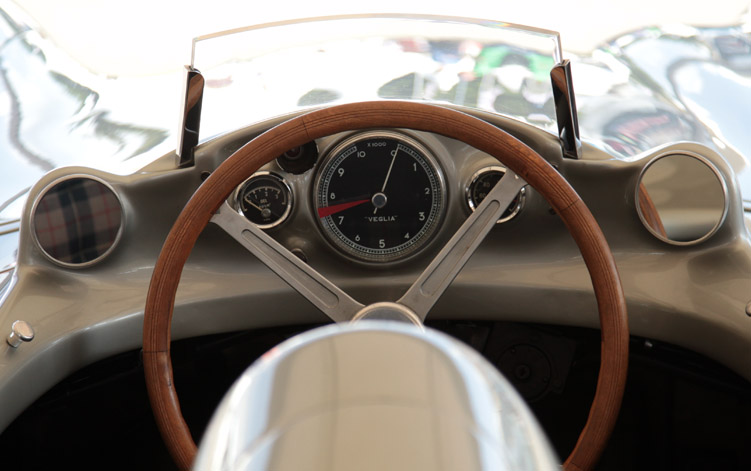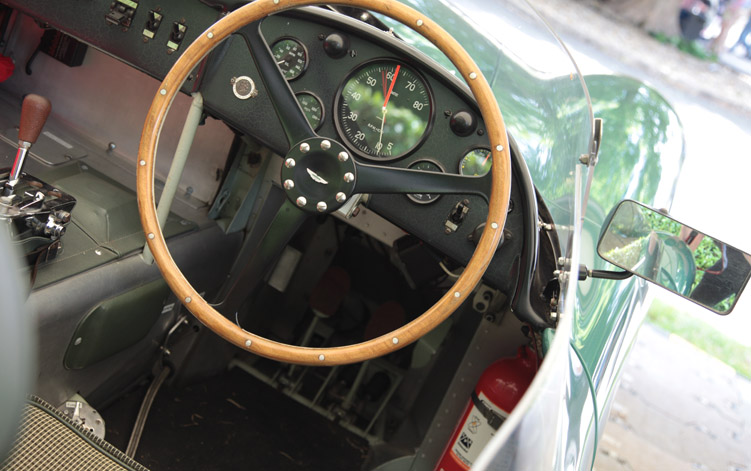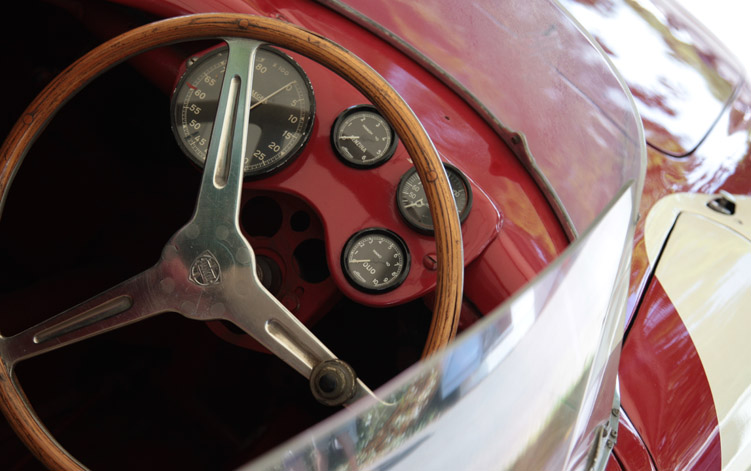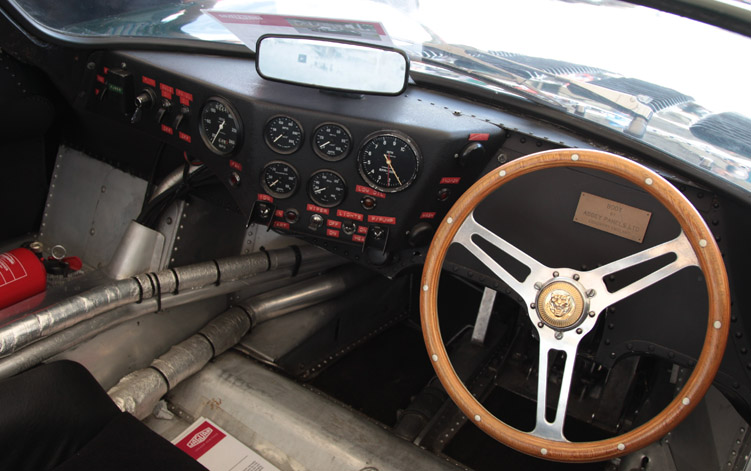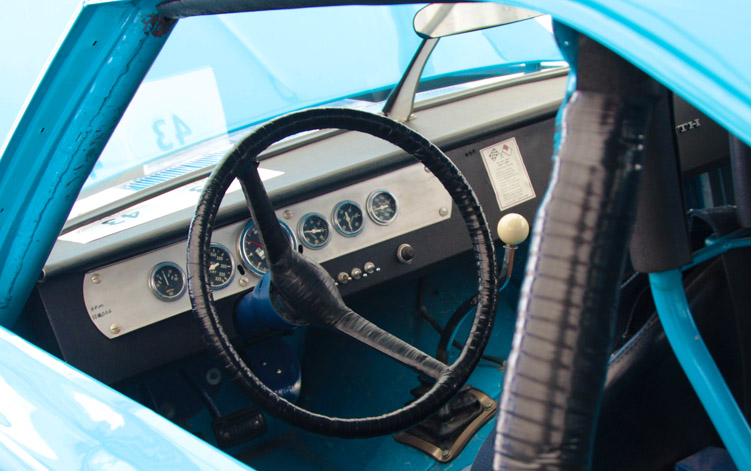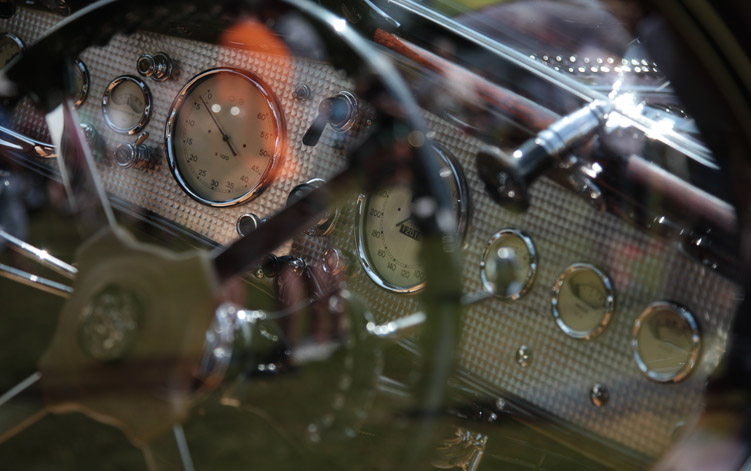In the hot seat
The office
One of the things we love about the biggest and best toybox in the world (also known as the Goodwood Festival of Speed), is that it presents a fascinating opportunity to compare different aspects of automotive design and see how it has evolved. One aspect that engages our imagination perhaps more than any other is the office. The place from where the business of going fast is conducted.
To Torque the dashboard is the place where provenance and patina come together in a heady brew of history. To see the world from the driver’s point of view. To imagine for a moment the sensations that assaulted them as they conducted their business.
Equally intriguing is how the designers set about their task of informing their drivers of the state of health of their thoroughbreds. Without doubt in earlier times, the overiding principle of dashboard design seemed to be ‘less is more’. But why? They certainly had the means to report the vital signs, but in race cars in particular, the level was the barest minimum.
Pictured above is the dash of a 1954 Mercedes W169. Question is was this to keep the work of the driver to a minimum (although Fangio probably had more than enough brain capacity to absorb all they could throw at him). Or was it simply a demonstration of Mercedes’ confidence in their own engineering ability? Either way the execution is as futuristic as the car’s overall streamliner design.

Compare that with the dash of equally evocative and certainly no less beautiful Maserati 250F. While the Maser’s blood red bodywork is without doubt some of the most beautiful ever to grace an F1 car. Indeed any car. The dash however has to be said does look somewhat agricultural when compared to the space age Mercedes. Obviously driver ergonomics were not high on the list of priorities at Maserati. But what did that matter when you had designed what Stirling Moss said was the best handling front engined car he had ever driven?
While the designers seemed to be only imparting the minimum of information to their F1 pilots, sports car racers were obviously deemed to require more information in their offices. The workmanlike dash of the Aston Martin DBR1 sports almost twice the amount of ‘data’ of its F1 cousins. And that’s not including the switch gear of which there is a relative profusion!
Returning to Italy and comparing the Aston to the dash of the Lancia of a similar vintage and once again the designers seem almost disdainful of the presence of the driver. Gauges mounted haphazardly in a piece of metal seemingly welded on as an afterthought. Mama mia! Also contrast the attention to detail of David Brown’s boys who were painting dash and steering spokes black to prevent reflections while over at Lancia such niceties were yet to be observed…
Fast forward to the middle of the next decade though and the relatively spartan layout of the DBR1 had morphed into the information overload of the Jaguar XJ13. Now admittedly the Jag was a prototype so may well have been equipped with more than normal in the way of instrumentation. But how test driver Norman Dewis ever managed to find the right switch is certainly something to ponder, even with the help of copious amounts of dymo labelling!
But if its simplicity you crave then maybe it’s hats off to the cockpit of the King of Nascar’s 1970 Plymouth Superbird. Mr Richard Petty used to conduct his business from this shall we say, highly functional office, at some 200mph. We particularly like the tailor made steering wheel cover…!
But after the no nonsense functionality of out and out racers, the last cockpit we’d like to visit is that of a 1935 supercar. Feast your eyes if you will on the amazing craftsmanship exhibited in the dashboard of this years concours winning 1937 Talbot-Lago T150-C-S ‘Goutte d’Eau’, and you can surely see the inspiration for today’s Pagani dashboards.
As they say “What comes around goes around”.
P.S. And just in case you were wondering, the dash at the top of the page is from the newly minted SCG003 race car.
Tags: Festival of Speed, Goodwood, Mercedes W169, NGK Spark Plugs, NGK Torque, Richard PettyPublished on 30th August 2015
